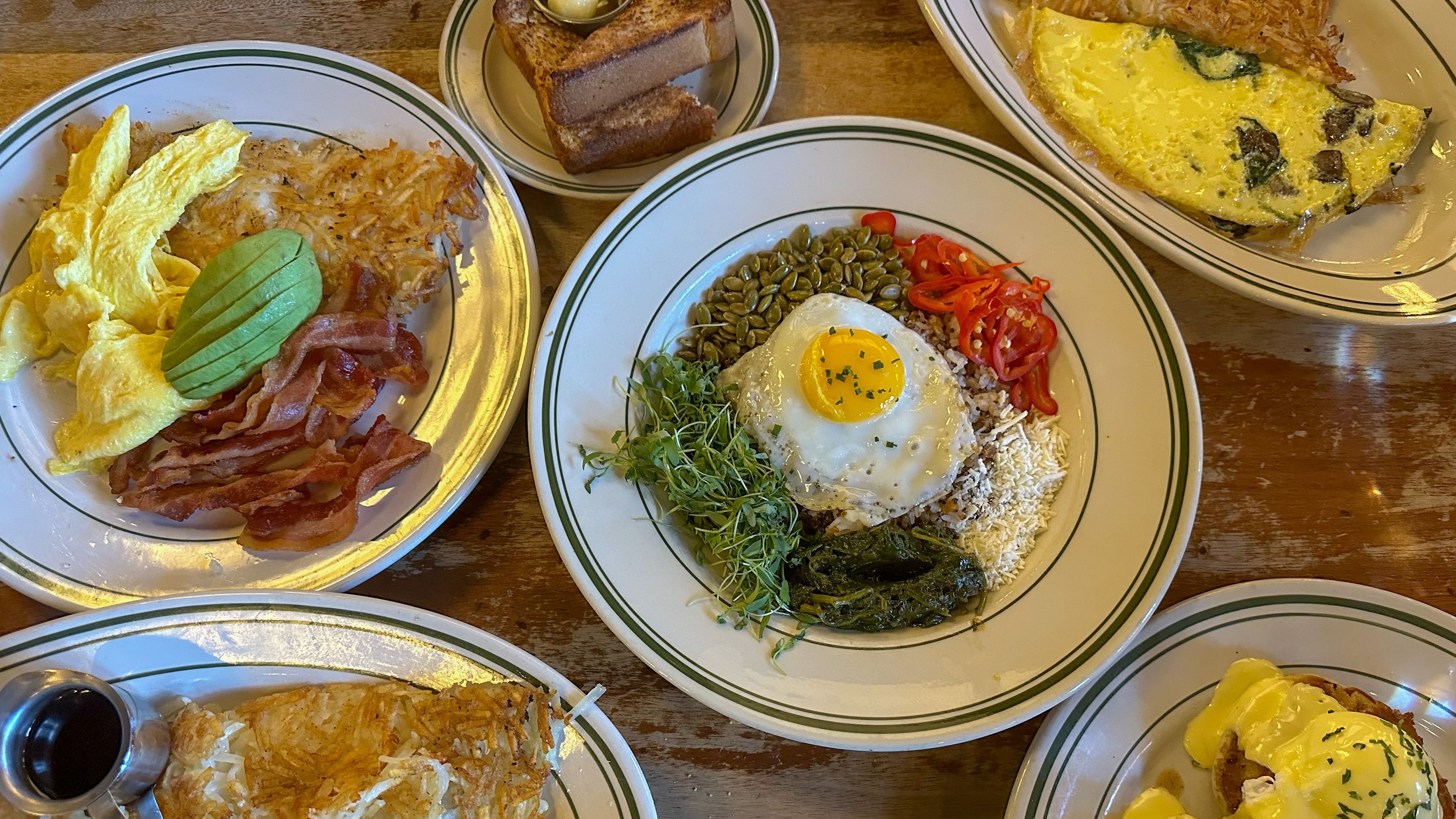
An abundant start to the day at Ted's Bulletin.
Photos by author
It’s official. I’ve gained three kilograms in two weeks. That’s typically how a visit to the United States clings to me. For starters, no matter which state of the US I visit, I’m invariably confronted by the most expansive breakfast. Right now, I’m in Washington DC, a city that has on average as many places for a sumptuous breakfast as it has historical monuments. The cornucopia of all-day breakfast options runs the entire comfort food gamut — crab cake benedict, steak and eggs, pancake stacks or thick-cut French toast, with blueberries, strawberries, and chocolate chips. Choice confronts us at every turn.
Foods and flavours have influenced America for centuries, but in the second half of the 1900s, these foods merged into the mainstream of American life. Compass Rose, which features international street food, personifies this cosmopolitan spirit. Items on the menu include chicken kebab and couscous from Tunisia, steak kebab from Morocco, lamb rack from Greece. The world, this meal seems to say, is our oyster, kebab, leg of lamb.
At first, with Mexican immigration, traditional foods like tortillas and enchiladas came in. Today, dishes that reflect a blending of Mexican, regional American and other Latino cuisines thrive. d’Lena, by chef Richard Sandoval, takes a modern approach on classic Mexican fare. For instance, you could order traditional guacamole, but you could just as well have your guacamole laced with smoked jumbo crab or elevated with sushi-grade tuna.
Migrant tables continue to help expand eater’s palates and foster a deeper understanding of diverse culinary techniques and traditions. On the Day of the Dead, the Mexican belief is that our departed come back and celebrate with us. This crossover is symbolised at d’Lena, by the restaurant blurring the lines between kitchen and bar. Mixologists create drinks with elements infused from the kitchen. I end up raising a toast to this tradition with a smoky sweet potato margarita.
The next day, I drive two hours to Richmond, the capital city of Virginia. Here too, there is a growing acknowledgment of traditional food customs. In the 17th and 18th centuries, Southern cooking gained popularity thanks to techniques taught by African-American and the Native people. Southern restaurants specialising in classic techniques continue to offer unpretentious staples like okra, chicken, catfish, and greens seasoned with pork. Now increasingly inventive restaurants have started mixing traditional recipes with modern execution.
The focus on farm-to-table dining, ingredient quality, and fresh and seasonal extends to everywhere I go in Richmond.
Virginia is also known as the Oyster capital of the East Coast. My final meal is at Shagbark, a restaurant known as much for its plate poetry, as for the quality of its ingredients. It is here I sample the freshest seafood, from raw oysters with a buttery finish raised in the Chesapeake Bay, to a smooth crab bisque.